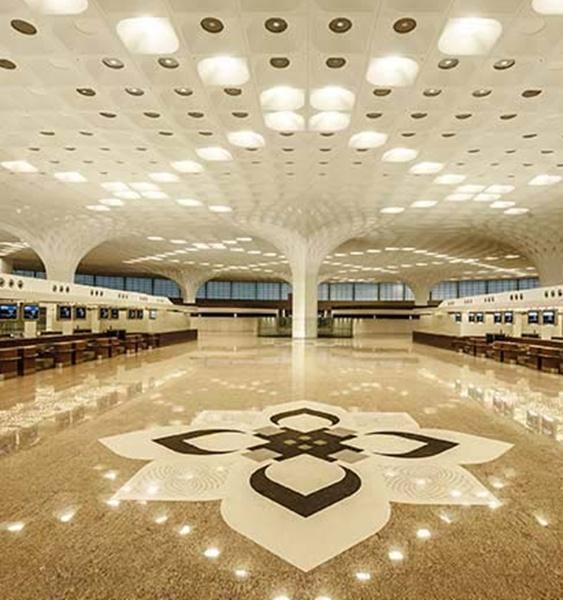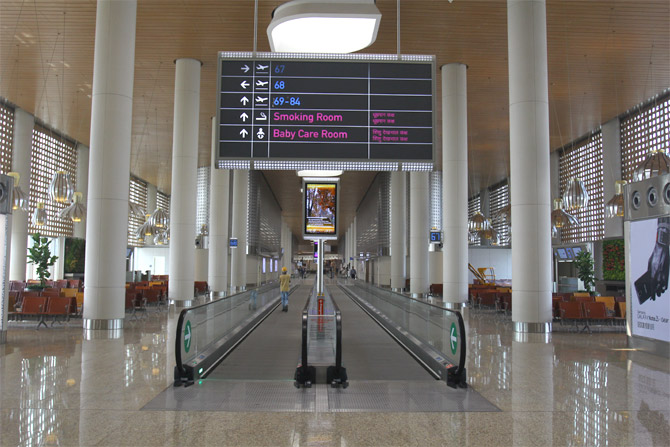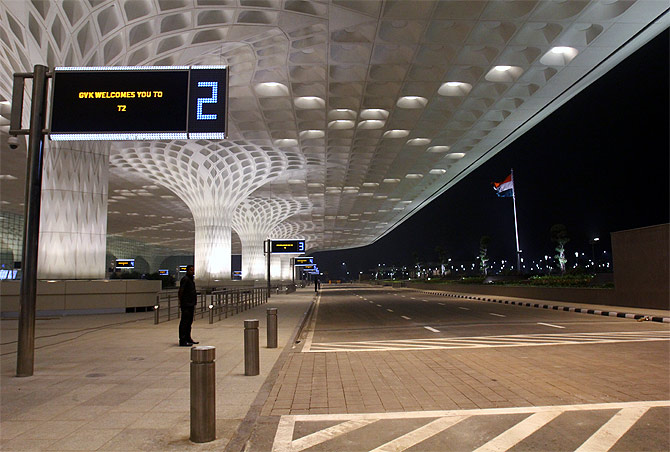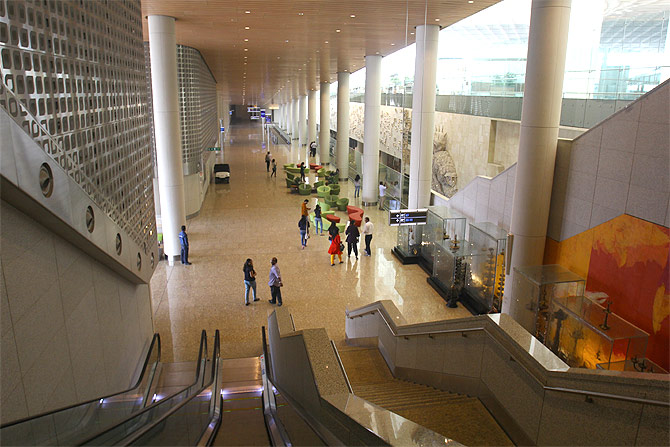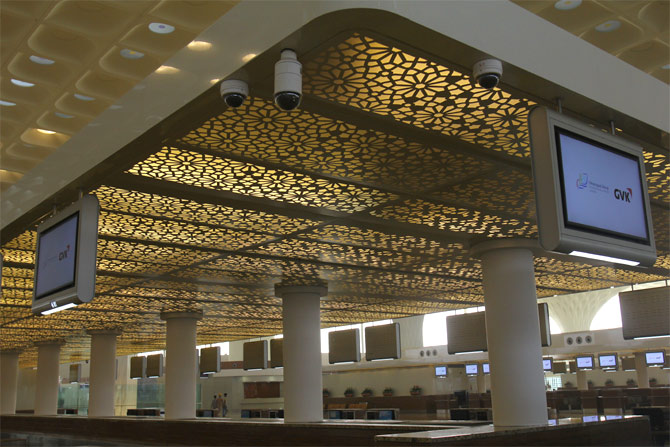 | « Back to article | Print this article |
An underground tunnel to link Mumbai's domestic airport to T2
The Mumbai airport is likely to become the first in the country to have an underground tunnel for airside vehicular movement.
A plan is under consideration to build a tunnel linking the domestic terminal to T2, the new integrated terminal, to improve operational efficiency and reduce delays in departures and baggage delivery.
Click NEXT to read more…
An underground tunnel to link Mumbai's domestic airport to T2
A Mumbai International Airport Ltd (MIAL) spokesperson said the plan had not been finalised. London, Hong Kong and Kuala Lumpur have underground road or rail lines passing under the airport - some connecting the terminals and others for general motorists.
The reason behind planning a tunnel for airside vehicular movement in Mumbai is that it will reduce congestion on the perimeter road and apron.
Click NEXT to read more…
An underground tunnel to link Mumbai's domestic airport to T2
“This will improve overall efficiency at the airport. It takes 20 minutes for buses or vehicles to travel from one terminal to another. The vehicles use the same apron space and have to wait when ever an aircraft is taxiing to its bay or the runway. Overall it causes delays in boarding and baggage delivery,” said an airport source.
An airline executive said very often they receive frantic calls from passengers who fear missing their flights. While there are several buses which ferry transit passengers between domestic and international terminals there are frequent delays because of congestion.
Click NEXT to read more…
An underground tunnel to link Mumbai's domestic airport to T2
A tunnel is expected to reduce the travel time and cut down the delays.
There is another reason why a tunnel may become essential. As a part of master plan, MIAL has proposed to construct parallel taxiway network along both its runways. The secondary runway does not have an end to end taxiway.
An extension of taxiway along the secondary runway will require the demolition of old air traffic control tower. "The taxiway will cut across the existing perimeter road which used by airport buses and other vehicles to travel from domestic and international terminal,'' the source added.
Click NEXT to read more…
An underground tunnel to link Mumbai's domestic airport to T2
Some aviation experts have expressed a surprise over the tunnel option when MIAL will be shifting domestic operations to T2 next year.
"A tunnel will not solve problem of airport delays. Parallel runways can solve it but there is no space for parallel runways in Mumbai,'' an expert remarked.
However airport executives say that the entire domestic operations will not be shifted to T2. The domestic terminals 1A and 1C may still function as usual. Also the domestic apron, where all domestic aircraft are parked will continue to be functional requiring movement of passengers.
Click NEXT to read more…
An underground tunnel to link Mumbai's domestic airport to T2
Four municipal water pipelines pass under the Mumbai airport and the BMC is constructing a tunnel which passes 70 metres below the runways and through adjacent areas to lay new pipelines.
An industry source said vehicular tunnels can be constructed 30-40 metres under the ground and would not obstruct the tunnel meant for water pipes.
Click NEXT to read more…
An underground tunnel to link Mumbai's domestic airport to T2
"A detailed geological and geotechnical survey will have to be carried out. In case an access is provided from outside, entry and exit points will have to be planned at least 800 metres away from the airport boundary to go 40 metres below ground level of airport. Land availability could be one of constraints. Seepage could be a problem which will have to be tackled properly. Foundations of airport structures as well as those outside in the vicinity of alignment will have to be studied for any instability,'' said Rahul Vaidya, senior engineer with Mott MacDonald, a management and engineering consultancy.
